Artificial Intelligence in Australia isn’t a distant future. It is a reality now. According to a study CSIRO, Artificial Intelligence is a A$315 billion-opportunity for the Australian economy. However, is the Australian industry prepared for the biggest opportunity of our times?
In this report, we explore:
- The AI roadmap and how it could touch Aussie lives
- The key drivers behind rising investments
- Gartner Hype Cycle
- Successful Australian Case Study
- What Australia should do to maximise benefits
AI can achieve the greatest impact if the activities are focused on areas of great need that matter to all Australians
Dr Larry Marshall, CEO of CSIRO
AI in Australia: Trillion Dollar Opportunity
- According to PwC, AI could be worth A$22 trillion by 2030
- Digital technologies, including AI, are potentially worth A$315 billion to the Australian economy by 2028 (source: AlphaBeta)
- Spending on Artificial Intelligence is forecast to double in four years: IDC
Sunrise industry
- Deloitte research reveals Australia needs up to 161,000 new tech professionals by 2030.
- AI, ML, computer vision, and natural language processing among others
- The Australian IT sector currently employs 663,100 professionals
The Australian ICT industry is expected to add 20,000 AI professionals per year
CSIRO Study
The AI Solution To Australia Specific Problems
Skin cancer detection – Earlier diagnosis enabled by AI could help save lives
- Over 16,000 new cases of melanoma were diagnosed in 2020
- Over 1,300 people died from the disease, according to CancerAustralia
- AI APP for detecting skin cancer performed “on par” with 21 certified dermatologists
AgTech
An on-farm agricultural robot Agbot II has been developed by the Queensland University of Technology. This could save Australia’s farm sector AU$1.3 billion per year.
The robot could help achieve this by automating weed removal and improving agricultural productivity.
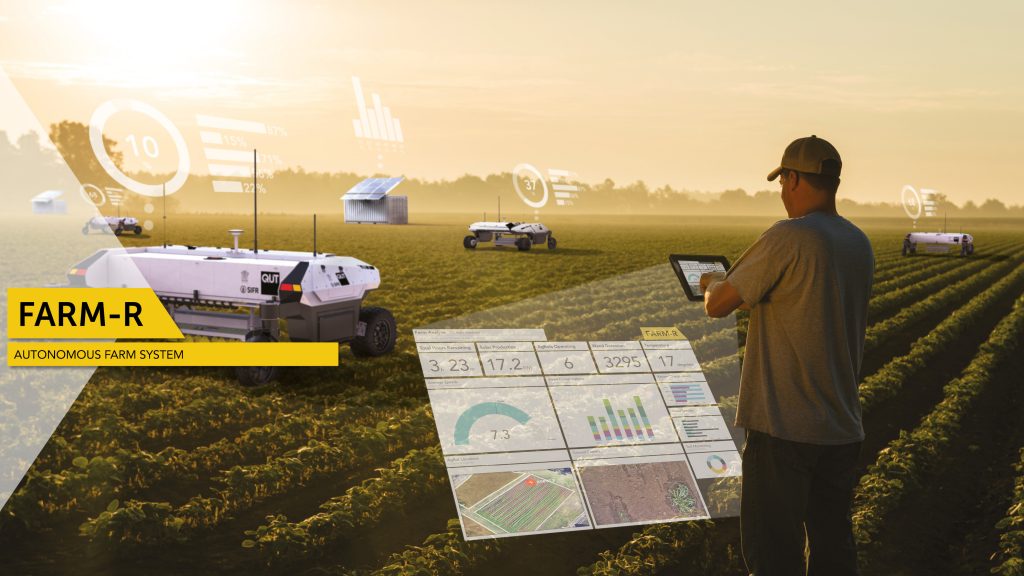
create new job-generating AI industries
CSIRO Study
Road Safety
Combined with lane departure warning systems, the other semi-automated technologies could prevent or reduce the severity of car crashes. This could help reduce the number of deaths and injuries on Australian roads.
AI with IoT For Improved maintenance of Sydney Harbour Bridge
- About 2400 sensors on the bridge monitor 800 steel and concrete supports
- Data generated by the sensors is analysed leveraging ML and predictive analytics
- This can identify priority locations for proactive maintenance

Image Courtesy: Unsplash
Automation in mining
Mining operations in the Pilbara region of Western Australia are amongst the world’s most automated
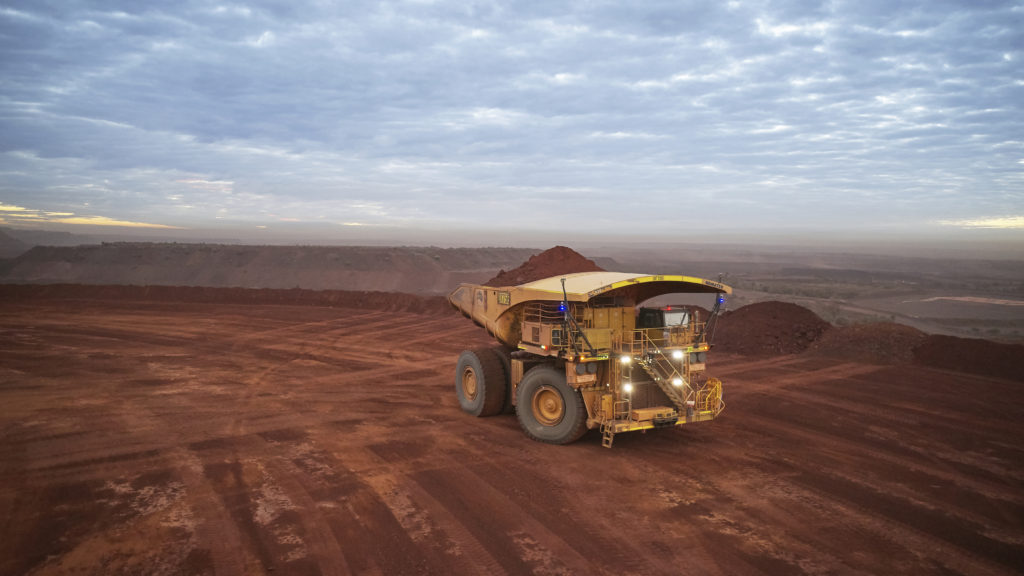
- Fortescue operates 112 driverless trucks leading to 30% productivity gain
- BHP has 50 autonomous trucks and 20 autonomous drills in Australia
- Launched in 2008 Rio Tinto’s mine-of-the-future has 140 automated trucks, over 11 automated drills, and 60% of train kilometres are in autonomous mode
Drones with AI Capabilities to spot sharks and help in rescue operations
- Rescue drones could help identify rip currents so beachgoers can be warned in advance
- This is done by leveraging AI, ML and vision systems
- CSIRO report highlights the example of two teenage boys’ rescue by an airborne drone.
- In January of 2018, the boys in the surf 700m from land (in a 3m swell) were rescued by an airborne drone
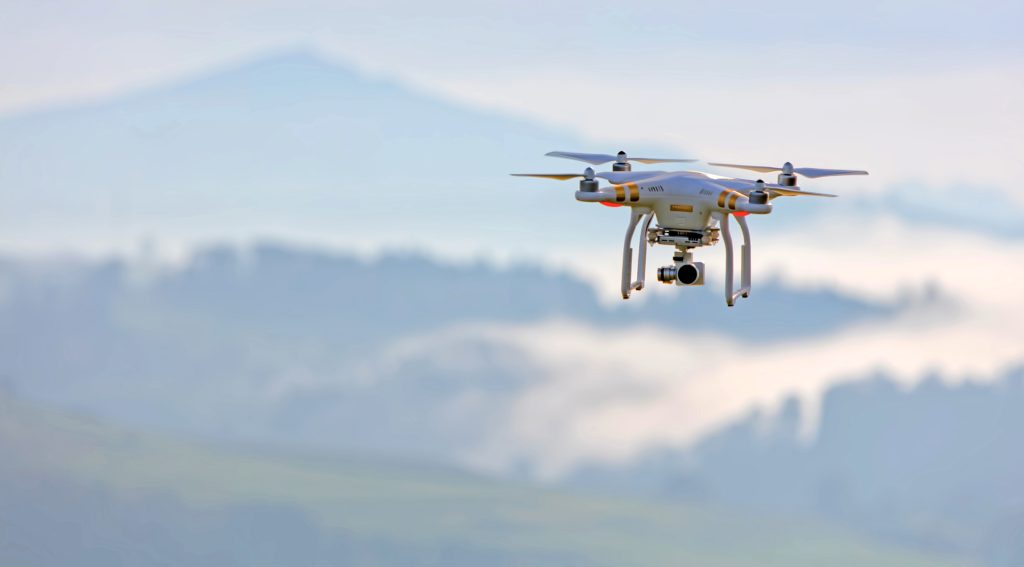
Image Courtesy: Ricardo Gomez | Unsplash
Startups: AI is the biggest startup industry in Australia
84% STARTUPS would be adapting or developing novel algorithms rather than simply using AI toolboxes
CSIRO DATA61 SURVEY OF AI STARTUPS
- The 2018 Startup Muster report finds that artificial intelligence is the biggest startup industry in Australia
- In 2018 there were 1,465 start-ups in Australia, 21% of which consider AI relevant to their products or services. This increased by 6% from 2017
How AI Might Touch Aussie Lives – The High Potential Areas for Deployment in Australia
Value is created when AI is partnered with humans who have deep domain expertise in Australia’s key industries
CSIRO roadmap recommends three areas:
- Healthy Ageing
- Cities and Infrastructure
- Natural Resources and Environment
Australia already has world-leading capabilities in AI for health, ageing and disability support

Dr Larry Marshall, the CEO of CSIRO said: “If Australia can focus its AI activities on areas of great need that matter to all Australians, like drought and food production, areas where we already have world-leading expertise, we can achieve the greatest impact.”
Success isn’t going to come easy. It is not a linear path.
“The success of our industries of the future will be determined by whether this powerful technology is simply used to cut costs, or whether we take full advantage creating value.”
AI can be transformative for disabled people by improving their life opportunities and helping them get good jobs
CSIRO Study
Focus Areas
- Helping people living with a disability, such as impaired vision
- Supporting senior citizens to live independently at home longer
- Keeping farms weed-free and support farmers
- Fighting bushfires, supporting firefighters
- Improve mental health
- Prevention and Treatment of Skin Cancer with early diagnosis
- Growth of small businesses by helping them develop better understanding of customers

Bionic eye, an Australian technology can help improve vision.
Image: Unsplash | Amanda Dalbjorn
AI creates the potential for the industry to make better products, and deliver better services, faster, cheaper and safer
Also read: Gartner Predicts 40% of Boards Will Have a Dedicated Cybersecurity Committee by 2025
Gartner Hype Cycle for AI
Despite the devastating impact of COVID-19, enterprises have continued to invest in Artificial Intelligence, according to leading analyst Gartner.
“About 47% of investments were unchanged since the start of the pandemic and 30% of organizations planned to increase investments”.
Gartner introduced 5 new solutions to the latest Hype Cycle. However, two megatrends dominate the landscape.
Also read: What’s New in the Gartner Hype Cycle for Emerging Technologies, 2020
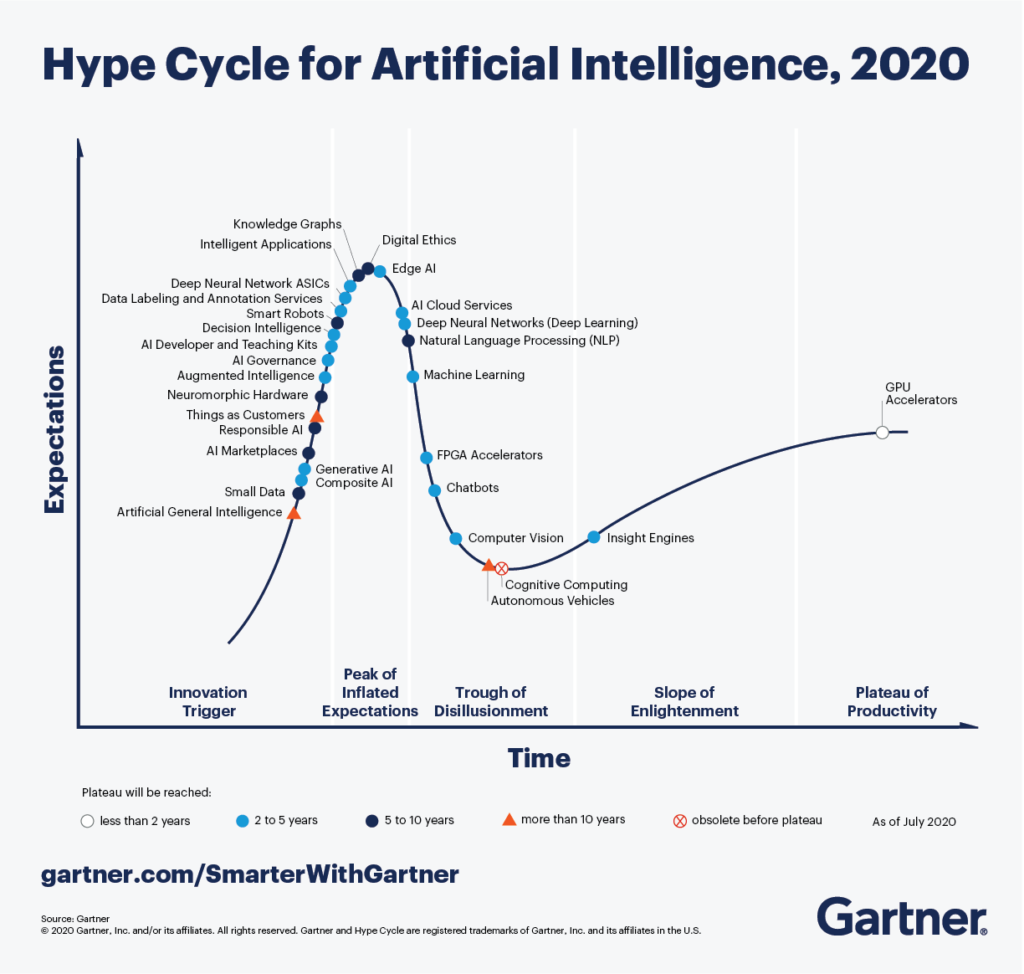
AI is starting to deliver on its potential and the benefits for businesses are becoming a reality
Svetlana Sicular, VP Analyst, Gartner
Also read: The AI Talent Crisis is a Myth
The 2 megatrends of Artificial Intelligence every enterprise must consider as part of the roadmap: Democratisation and Industrialisation
The democratisation of AI and industrialisation its platforms that production workloads and high-scale applications are looming in the near future.
Gartner noted: “AI will be reaching significantly more people via the democratisation. This requires industrialized platforms that accelerate and automate deployment to make it accessible to the masses”.
The democratization of AI means that it is no longer the exclusive subject matter of experts
Gartner study
In the enterprise, the target for democratization may include customers, business partners, executives, salespeople, assembly line workers, application developers and IT operations professionals.
According to a recent Gartner survey, the C-suite is steering AI projects, with nearly 30% of projects directed by CEOs. Having the C-suite in the driver’s seat accelerates adoption and investment in relevant solutions.
Companies will adopt AI — not just because they can, but because they must
Ritu Jyoti, Analyst IDC
Also read: Debunking The Top 6 Myths About AI
AI Investments Set To Double In Four Years: IDC
Global spending could double over the next four years, growing from $50.1 billion to more than $110 billion in 2024, according to the latest study by IDC.
As organisations accelerate digital transformation, IDC said the spending will increase at the compounded annual growth cate (CAGR) of about 20%.
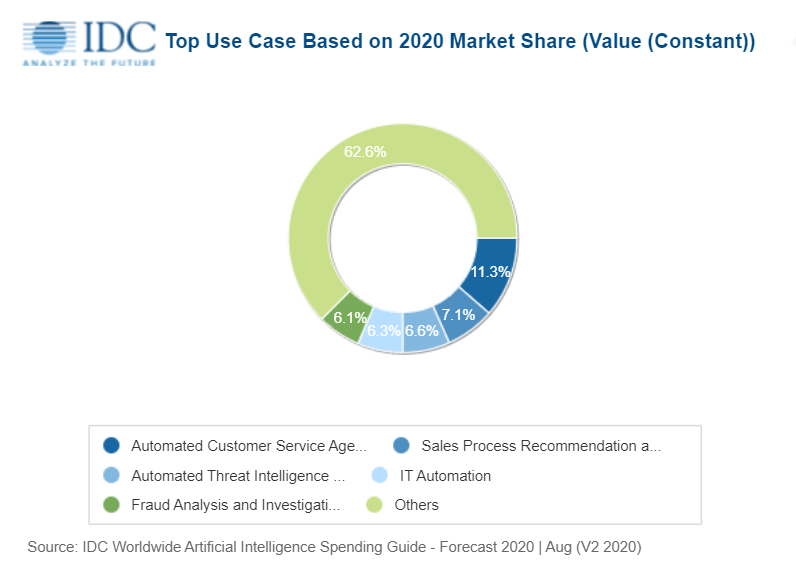
The Key Drivers Behind Rising AI Investment
IDC’s latest report on reveals the main drivers behind rising investment in Australia: Improving customer experience and helping employees to get better at their jobs.
Traditional business models are making way to the new ways of doing business in the COVID impacted world.
The IDC report revealed, Conversational AI is transforming the customer care model. Predictive analytics is shifting traditional maintenance business models.
Read more in the report “Why Australian Enterprises Are Investing In AI” here.
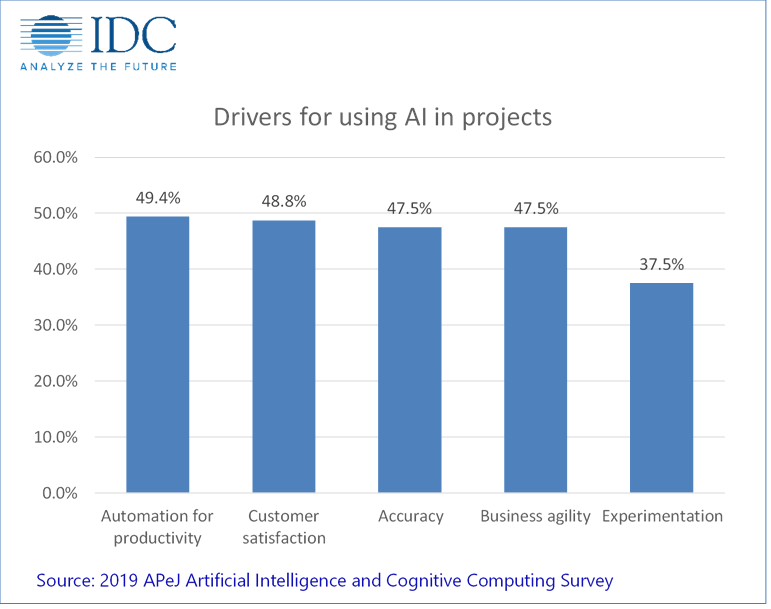
Australian Success Stories Of Successful Transition with AI and Digital Technologies
AI success stories are not just with large technology companies or Big Tech. CSIRO study reveals successful technology transitions are underway in small and large companies across Australia in very traditional sectors.
One of the most striking examples comes from Brisbane based father-son company Watkins Steel.
From Selling Steel to Selling Steel Knowhow
The Highlight Of This Uniquely Australian Case Study: No Job Loss Despite AI Enablement
Based in Brisbane, 50-year old company Watkins Steel specialises in small to mid-size structural steel, metalwork and architectural structures.
Three years ago, recognizing the potential of digital technologies, the company started its transformation from traditional steel fabrication to technology services offering 3D laser scanning, design and data collection.

CEO Des Watkins said the “traditional hard-hats are replaced with cutting-edge HoloLens (augmented reality) technology”.
Business doubled in size adding generating more employment.
Australian Law Firm Deploys AI To Reduce Time For Claims Assessment

Australia’s leading law firm Maurice Blackburn rolled out an AI-infused solution to shrink time for insurance claims assessment.
The solution enables a fast, inexpensive and accurate triage of claims, particularly valuable in view of the firm’s “no win, no fee” proposition.
This also helps free up the lawyers’ time who would otherwise have their time taken up with combing through policy fine print.
Developed by Microsoft partner, Arinco, the Law Firm claims saving time and improving customer experience with the solution. The solution leverages Microsoft Azure Cognitive Search and Services.
The law firm has reduced the time taken to assess a superannuation disability insurance claim reduced from months down to minutes
So what should Australia do to maximise benefits from AI?
- Develop a Specialist Technical Force
- Focus on Data Governance and CyberSecurity
- Develop Digital Infrastructure
- Ethics, Standards and Interoperability
Apart from addressing the concerns on AI’s negative impacts, the industry has to enable career transitions for effective and sustainable deployment
Develop a Specialist Technical Force
As the competition for dominance increases, Australia must develop a Specialist technical workforce to meet the operational and strategic needs.
32,000 – 161,000 specialist workers maybe required by 2030
CSIRO ESTIMATE
“Effective data governance, building trust in AI are necessary ingredients for successful and wider adoption.
Also read: Telstra Customer Service: Transforming with AI
Data Governance, Access to DataSets and Ethics
Data governance is a critical ingredient along with access to datasets for sustainable AI development and deployment. CSIRO study reveals ‘access to training datasets is one of the most critical and complex stages of development’.
Better access to high quality, labelled datasets will improve the training ground for AI systems
There are already substantial open data and related initiatives happening in Australia. CSIRO report highlighted the example of www.data.gov.au and the Australian National Data Service.
“Achieving data integrity could be an increasing challenge for enterprises whereby people’s private and confidential information is properly protected and managed.”
Standards Australia (SA) is working with The International Standards Organisation (ISO) and the American National Standards Institute (ANSI) in this regard.
Standards and system validation will be important ways for developing improved trust which will be vital for achieving widespread adoption of AI
AI represents an opportunity for improved fairness, transparency, equality of opportunity and overall ethical outcomes. However, it is a powerful technology and comes with risks for negative outcomes.
It is imperative the Australian Technology industry unleashes the power of AI and creates a unique position for itself ahead.













